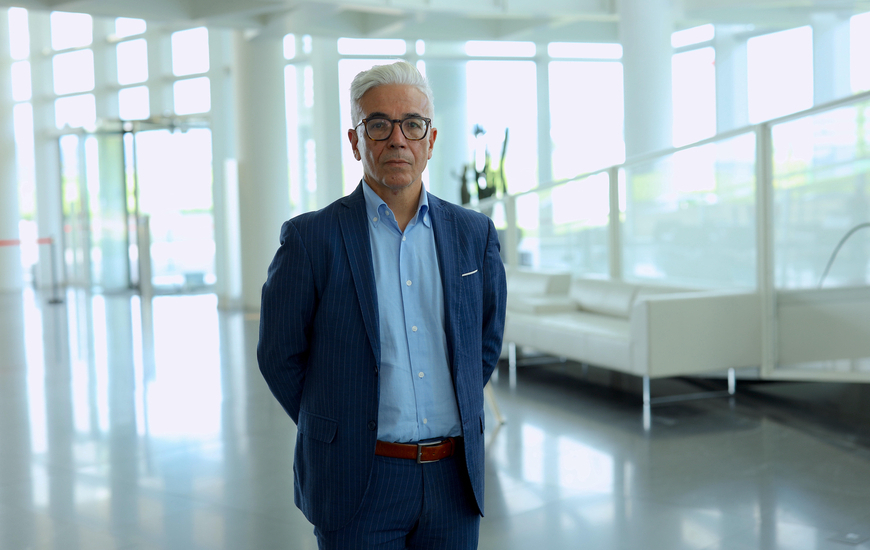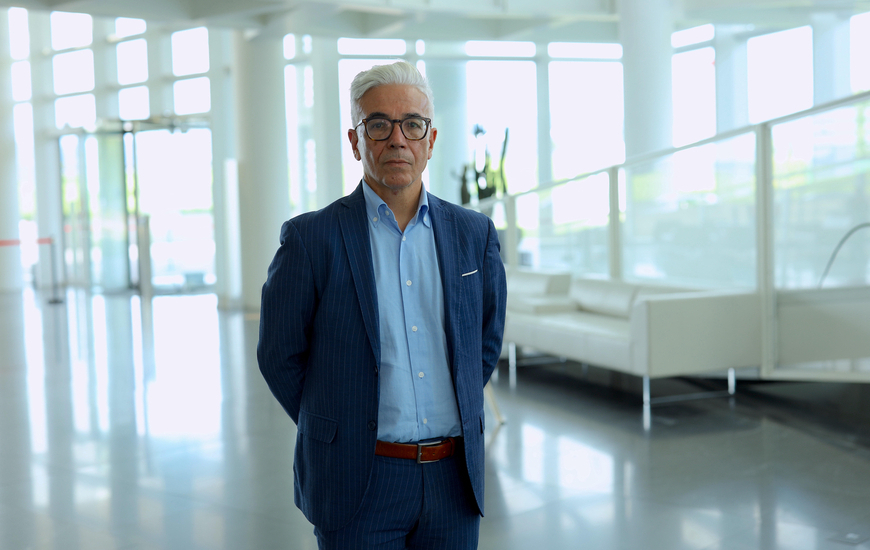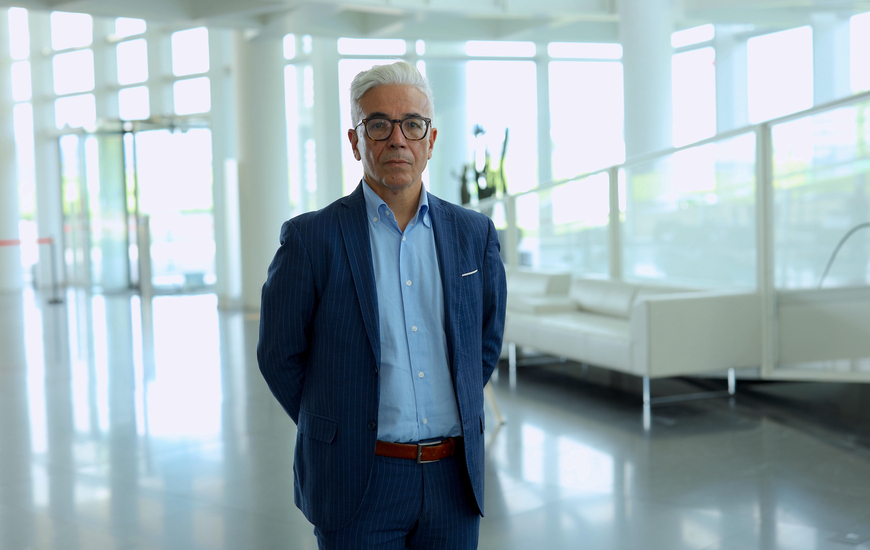Second interview of the special series dedicated to the national conference AIMAT - the Italian Association of Materials Engineering - in Catania, at the Plaza Hotel, until June 1st. It is the turn of Luigi Coppola, Professor of Building Materials and Restoration Materials at the University of Bergamo.
by NICOLA CATENARO
Professor Coppola, the AIMAT conference is an opportunity to make a point of materials and future production technologies. What do you see in your field of expertise?
«Speaking about my field of expertise, which is cementitious materials, there is currently a great emphasis on reducing their carbon footprint. It is a sector known as 'Hard To Abate' (HTA) where, given the current state of knowledge, it is difficult to eliminate and reduce CO2 emissions to zero. Nevertheless, there are short-term, medium-term, and long-term strategies that need to be implemented to achieve a carbon-neutral footprint for construction materials. In the short term, there is a need to use low-clinker cements. Clinker is the material obtained through kiln calcination, which requires significant energy consumption and leads to substantial CO2 emissions. To put it in perspective, for every ton of clinker produced, we emit one ton of CO2 into the atmosphere. Therefore, reducing the amount of clinker in cement is a short-term strategy that can be implemented».
What is the situation in Italy?
«To be honest, Italy is ahead compared to other countries, including the United States. We have a long-standing tradition that dates back to the Romans, who used pozzolanic materials (mixed with lime) that often rely on by-products from other industrial processes, such as iron production. In Italy, we have been using cement with blast furnace slag or fly ash, which are waste products from coal-fired power plants, for quite some time. These materials can be reused without any treatment and have almost zero CO2 impact».
What about the regulatory framework?
«A new regulation has recently been issued, allowing the use of these secondary raw materials up to 50%, effectively cutting the cement content in half with these secondary raw materials and clinker. This obviously contributes significantly to reducing carbon dioxide emissions. Of course, it is also necessary to raise awareness among designers - architects, engineers, and surveyors - to request ready-mixed concrete made with these environmentally friendly cements while ensuring the required performance. We are talking about concrete as a structural material that must guarantee the predetermined safety levels for a particular structure. So, the challenge is to ensure the performance and durability of constructions, preventing them from degrading in a short time, all while reducing the carbon footprint and CO2 emissions per cubic meter of concrete».
What are the prospects for this process?
«Every year, we produce around 4.2 billion tonnes of cement worldwide. If we combine all the possible resources derived from these secondary raw materials, reusing all available blast furnace materials and fly ash, the resources would not be sufficient to replace all the cement we use. Even if we add other low-carbon binders such as sulfoaluminate cements, we would not be able to support the expected population growth of 9.7 billion by 2050. We still need Portland cement (the most commonly used type). This means that even if we had a completely green fuel today, we would still not be able to reduce or eliminate CO2 emissions from combustion. The path forward is to capture carbon dioxide at the plant and reuse it as a raw material in the process. This process is called calcium looping, and there is already a pilot plant in Italy implementing it, aiming to make it economically sustainable as well».
What does the future hold for the construction industry?
«The future lies in producing cement in kilns but with captured CO2 that is reintroduced into the process. At the university, we are also studying the possibility of reusing captured carbon dioxide, which has been made available in liquid form through pressurization in tanks, directly in concrete production. Among other things, there is also the possibility of studying additives that allow for a reduction in cement dosage, provided there is an equivalent performance, which should never be forgotten. Another approach is to replace a portion of natural aggregates, such as sand and gravel, with waste materials from activities such as demolition or even, as some suggest, from scrapped cars».
What about composite materials?
«From a sustainability perspective, the durability of the structures is a sine qua non condition to achieve sustainable structures. Therefore, the replacement of traditional rods with fiberglass bars – immune from the aggressive attack of carbon dioxide and chlorides – could be a valid "sustainable" solution in the construction of buildings and infrastructures particularly exposed to aggression (exposed to the action of freezing and thawing and deicing salts, structures in marine environment, etc.). With this in mind, the America Concrete Institute - whose Italian chapter is chaired by me - founded NEx, ACI's Excellence Center for Nonmetallic Building Materials and promotes, funding them, research projects that move in the direction of using composite materials in concrete construction. Furthermore, at the end of their life, composites - in particular fiberglass - can be recycled, for example, in the production of cement clinker by replacing part of the natural raw materials to be sent to kiln, exploiting both the calorific value of the organic fraction and the silica component deriving from the glass. There are many solutions, but we must avoid greenwashing, where everyone talks about sustainability and the environment but fails to truly commit to these issues».
WHO IS
Luigi Coppola is a professor of "Building Materials" and "Restoration Materials" at the University of Bergamo - Department of Engineering and Applied Sciences (DISA). He has authored over 320 publications in national and international journals and conference proceedings, 21 books, and several patents in the field of construction materials. He has served as a chairman and invited speaker at numerous international conferences. In June 2000, Luigi Coppola was awarded by the American Concrete Institute (ACI) and the Canadian Institute of Materials, Energy, and Transportation (CANMET), the highest global institutions in the field of cementitious materials, for his "outstanding and sustained contributions to enhance the Durability of Concrete." Luigi Coppola was the youngest researcher worldwide and the first Italian to receive this prestigious recognition for his work in concrete durability. He is also the President of the American Concrete Institute Italy Chapter.
-

-
30 May 2023


























